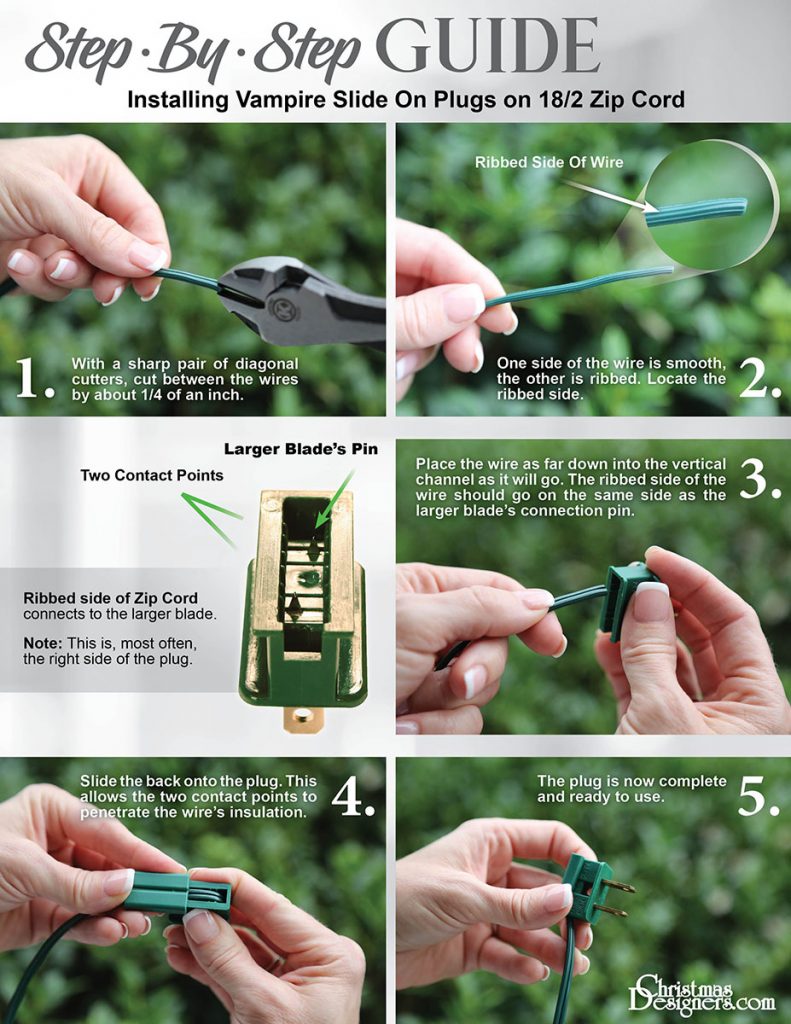Vampire Plugs Are the Key to a Professional-Looking Christmas Light Display
If you’re a Christmas enthusiast looking to up the ante on your annual light display, it can be difficult to know where to start. Maybe you’ve done a little digging, and have discovered the open industry secret that is empty socket light line. You know that the key to clean a display with no trailing lines is measuring out the exact length of cord you need, and cutting it to size. You want to get started crafting a truly professional-looking display, but you’re intimidated. The idea of cutting and fashioning your own custom lines of Christmas lights sounds more like a job for an electrician than a hobbyist.
Lucky for you, with the use of slide on vampire plugs, building your own light lines or extension cords is incredibly simple. It requires nothing more than a pair of wire cutters, some C7/C9 light line or zip cord, and a couple of minutes.

Vampire Plugs: The Unsung Heroes of the Christmas Light Industry
Vampire plugs, sometimes called Gilbert plugs, are comprised of a small plastic housing, a slide-on piece designed to hold in the wire, and either a male or female plug end. They’re easy to use, cost almost nothing, and enable almost anybody to build custom-length extension cords and Christmas light lines with minimal hassle. To use them, you simply need to measure out the length of the empty socket light line or 18/2 zip cord you need and cut it to size. Then, make sure the ribbed side of the cord lines up with the larger blade on the vampire plug, and slide a male and a female plug onto either end. To see the process in action, watch this quick tutorial video: See? It’s the easiest way to make perfectly-sized light lines and extension cords out there. It’s been a technique used by professional installers for decades, one that’s remained pretty much unchanged for almost as long.Vampire Plugs and SPT
The one thing you need to keep in mind when buying vampire plugs is that they need to match the SPT rating of the cord or line you’ll be using them for. There is a lot of confusion surrounding SPT ratings — and a lot of misinformation out there — but they’re actually pretty straightforward in practice. SPT primarily refers to the thickness of the insulation. SPT-1 is .03” and SPT-2 is .045”. Since SPT-2 is 50% thicker than its counterpart, it’s often used in areas where harsh weather becomes a problem or if it’ll be experiencing a lot of wear and tear. It’s possible to get a lot more technical than that with amperage and all kinds of complex calculations — see our blog on the subject — but all you need to know is that as long as the vampire plugs you’re using match the SPT rating of the empty socket light line or zip cord, you’re good to go. If you’re serious about your Christmas display, there’s no reason not to make the switch over to empty socket light line with vampire plugs. Check out our step-by-step visual guide below to get started!

